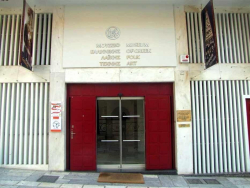Museum of Greek Folk Art

Museum of Greek Folk Art
Until 1973 it was housed in the Tzistaraki Mosque in Monastiraki Square. The permanent exhibition and main functions were then transferred to the building in Plaka. Today, it belongs to the Greek Ministry of Culture and is the central State ethnographic museum.
This interesting museum houses rich collections of objects representing all branches of folk art from 1650 through modern times. Exhibits include embroidery, weaving, costumes and more.
The museum is made up of 4 annexes:
The Central Building, at Kydathinaion Street 17, Plaka.
The Tzisdaraki Mosque, at Areos Street, Monastiraki Square, housing the folk ceramics collection of V. Kyriazopoulos.
The Bath-House of the Winds, Kyristou Street 8, Plaka. The only remaining Public Baths of old Athens. It functions as a museum on the theme of body hygiene and personal beautification.
The Building at Panos Street 22, Plaka – with the most recent permanent exhibition: "Men & Tools. Aspects of Labor in Pre-industrial Society".
Moreover, the Folk Art Museum of Greece hosts a library with 5,000 books and magazines on folk art and ethnology. The museum is frequently visited, especially by school children, and organizes lectures, seminars, pottery classes, festivals, storytelling nights and shadow theater performances.








